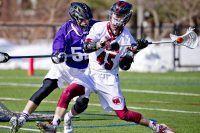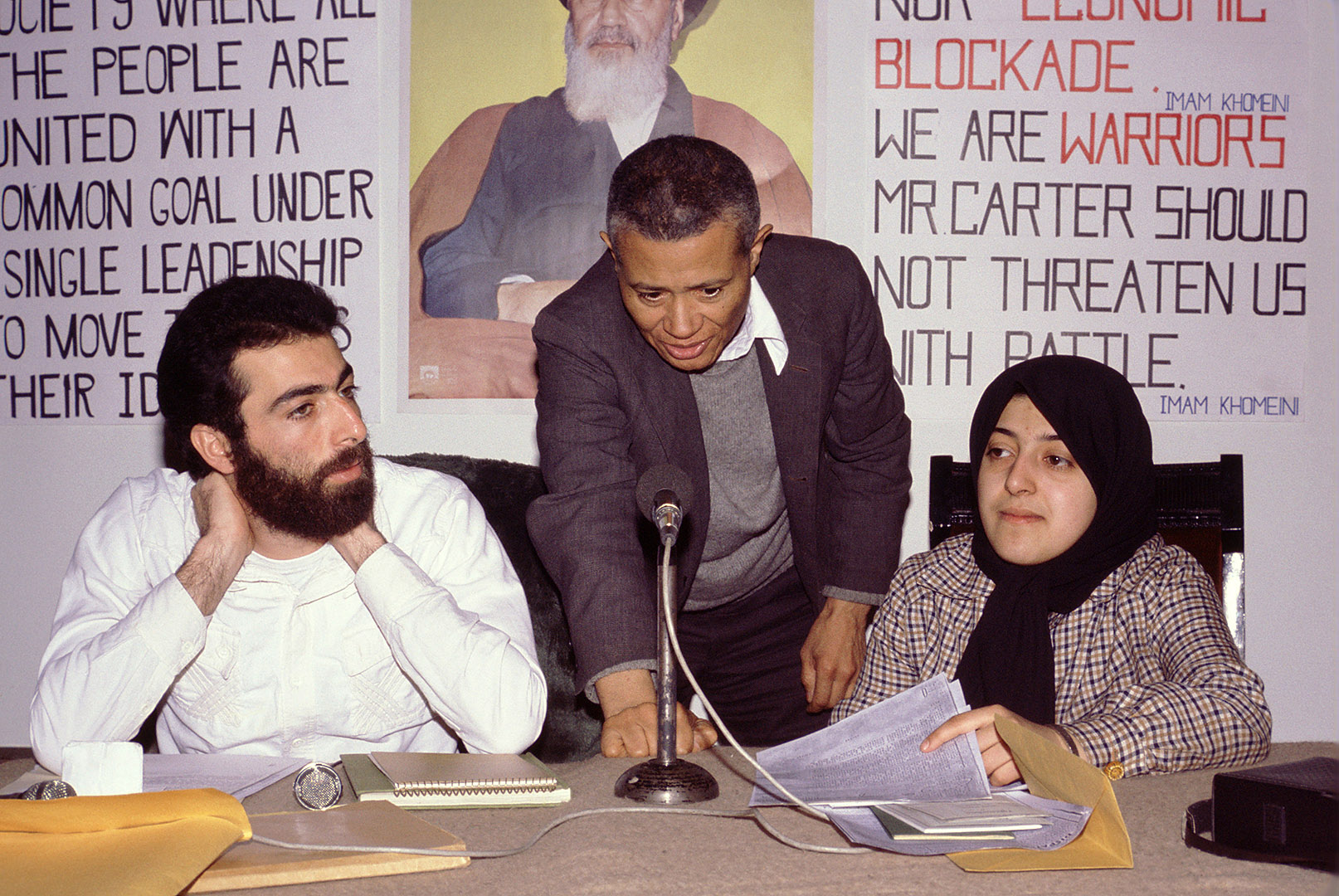

It’s been a century and a half since Bates played host to the first football game in Maine.
In 1875, the first game was a roughhouse affair, against Tufts, with a rudimentary set of rules but a purpose that has endured through the years: a chance to compete athletically, with high energy and high ideals, and to create connections and friendships of a lifetime.
To celebrate the sesquicentennial, Bates has scheduled a series of events, including on-field festivities, coinciding with the season opener vs. Amherst at 1 p.m. on Sept. 13.
To celebrate the anniversary, here are 15 uniquely Bates football moments from 150 years.
Nov. 6, 1875: Maine’s first college football game
Tufts and Bates played the first college football game in Maine on Nov. 6, 1875.
As Charlie Clark ’51 wrote in Bates Through the Years, the first game was “greeted at the time with some hilarity.” Few Bates players knew the rules, and none had played before.

In the days before the game, the Bates Student noted student enthusiasm. “Every man who had failed to distinguish himself in baseball seemed possessed with the idea that here was an opportunity to immortalize himself.
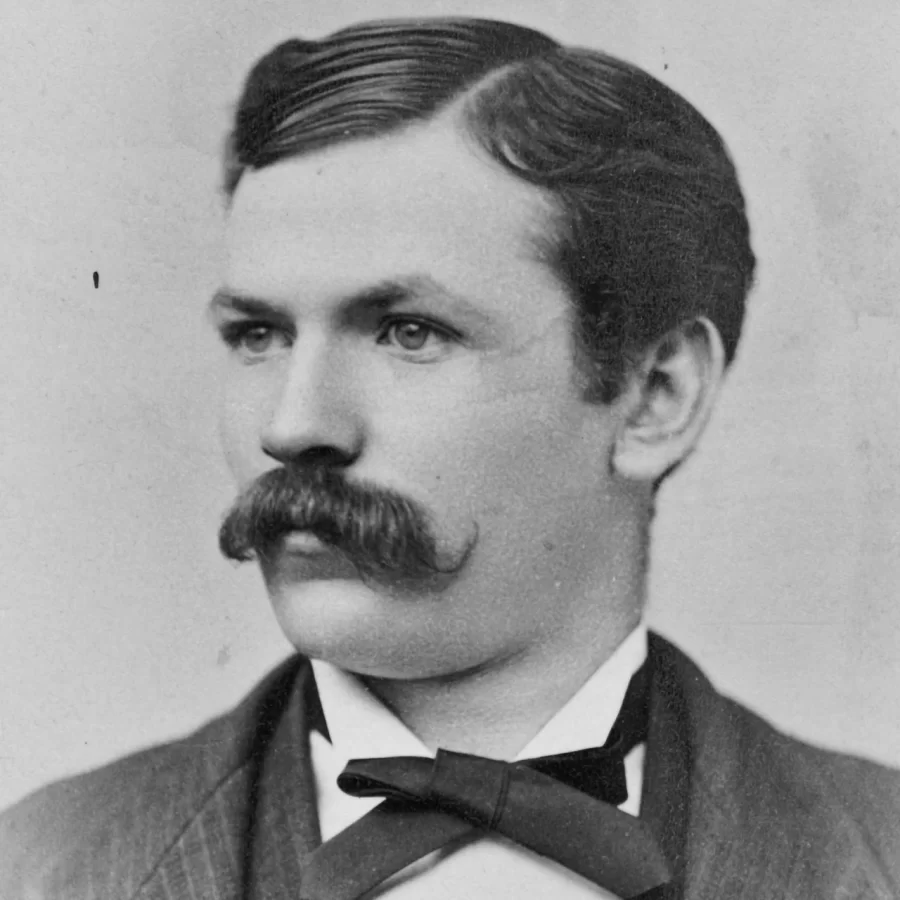
“Tall and short, lean and stout, quick and slow, active and clumsy have all rushed into this new game. Shirts have been torn, coats curtailed, boots ruined, and shins bruised; but, never mind, it’s fun and good exercise.”
The bemused tone continued with the Lewiston Evening Journal’s coverage: “Occasionally, 10 or 12 men got into a promiscuous scramble for the possession of the ball…and came forth rubbing their shins and using such phrases as, ‘Gracious juggernaut.’”
The rules as published in the Student: “No one wearing projecting nails, iron plates, or gutta percha on the soles or heels of his boots shall be allowed to play.”
In a history of Bates football, Adelbert Jakeman, Class of 1927, noted an ulterior purpose of that first game: “to form an acquaintance with the students” from a fellow college.
Oct. 26, 1889: Football promises to transform a ‘dooryard dreamer’ into a ‘cosmopolitan’
Bates played only one football game in the decade of the 1880s, but there was lots of talk both on campus and across the country about how the new college sport could teach lessons in manhood.

On Oct. 26, 1889, the Lewiston Saturday Journal reprinted a letter from an unnamed Bates alumnus urging the college to re-adopt the game. Football, the writer said, can knock the “bow-kneed slovenliness” out of a young man, and shake out the “hayseed element,” language consistent with how football was being viewed as a route to manliness.
In football, a young man “has got to wake, he has got to stir himself and at the same time he learns something of the universal struggle necessary to gain a foothold anywhere.” The physicality of football, he wrote, “makes a cosmopolitan out of a dooryard dreamer.”
The sole game played in the decade was versus an experienced Bowdoin team, a 62–0 loss.
Oct. 29, 1898: Bates defeats Bowdoin in a historic ‘nerve destroyer’
By the 1890s, football was booming nationwide. In Maine, an historic Bates–Bowdoin rivalry was taking root. Bowdoin had easily won the first five games of the series, but Bates broke through with a 10–6 win at Bowdoin in 1897. It was the first time Bowdoin had been defeated by a Maine college, which set the stage for high drama in Lewiston in 1898.
With Garcelon Field not yet finished, the 1898 game was played at foggy Lee Park, a circus grounds near campus, with Bates upsetting its rivals, 6–0, in a bruising battle before 2,500 fans.
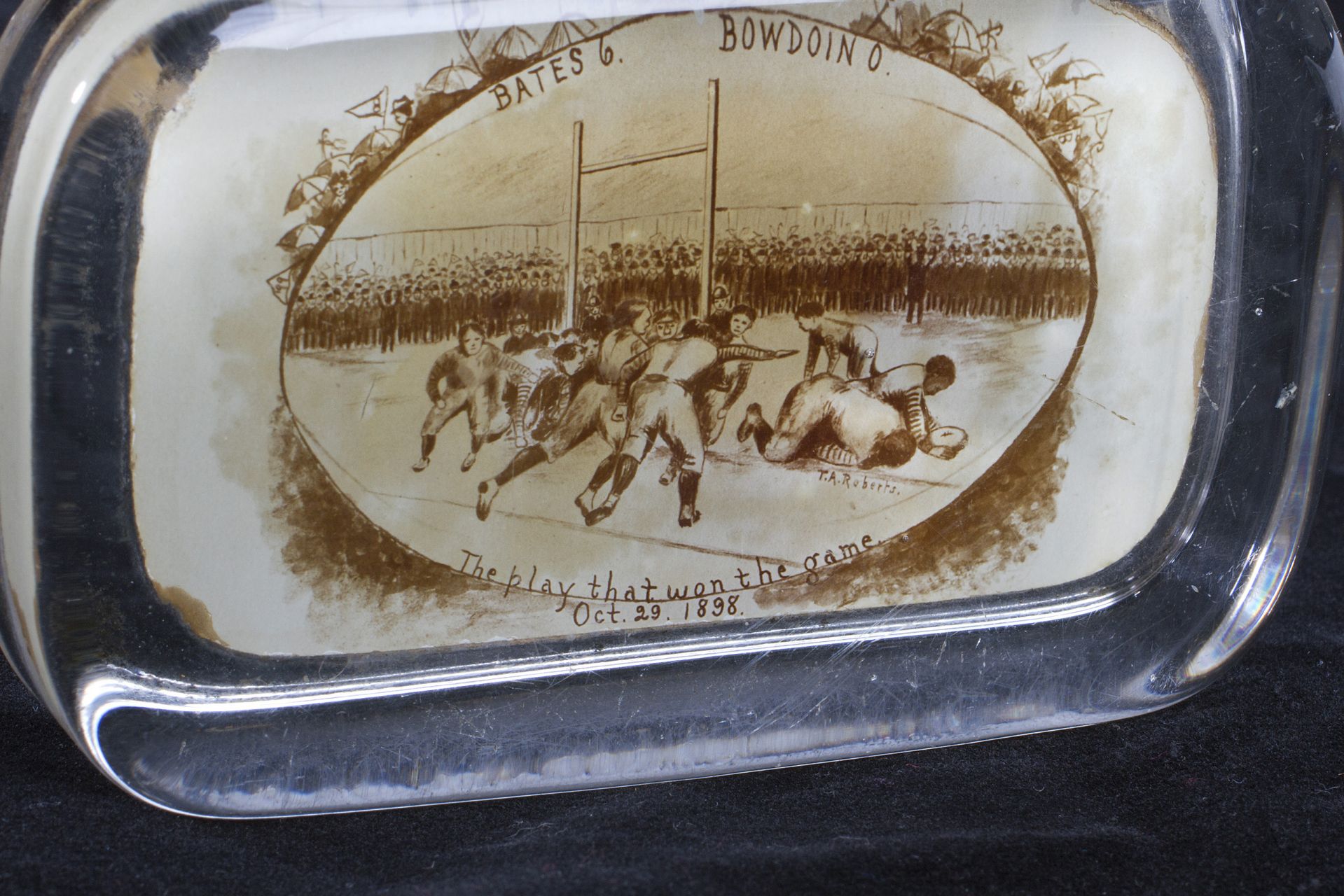
The Bates hero was William Allen Saunders, Class of 1899, a guard from Virginia who powered into the end zone for the game’s lone touchdown. Newspapers called it “the fiercest foot ball [sic] ever seen in this state,” and said Bates’ “happy farmer boys” celebrated with trolley rides, fireworks, and songs mocking Bowdoin.
Saunders, who had studied at Storer College in Harpers Ferry before Bates, went on to a long career teaching math and science at historically Black colleges.
Nov. 30, 1905: President Chase defends the imperiled sport of football
In the early 1900s, college football appeared headed toward oblivion. Scandals involving professional ringers abounded, and mass-momentum formations like the “flying wedge” made the game deadly. In 1905, at least 18 people died playing football and more than 150 were injured, according to The Washington Post.
On Nov. 28 of that year, Columbia University abolished the sport. The university released a list of injuries sustained that year, including broken arms, broken collar bones, a sprained spinal column, a dislocated shoulder, and a “back injured by being jumped on by a Wesleyan player.”
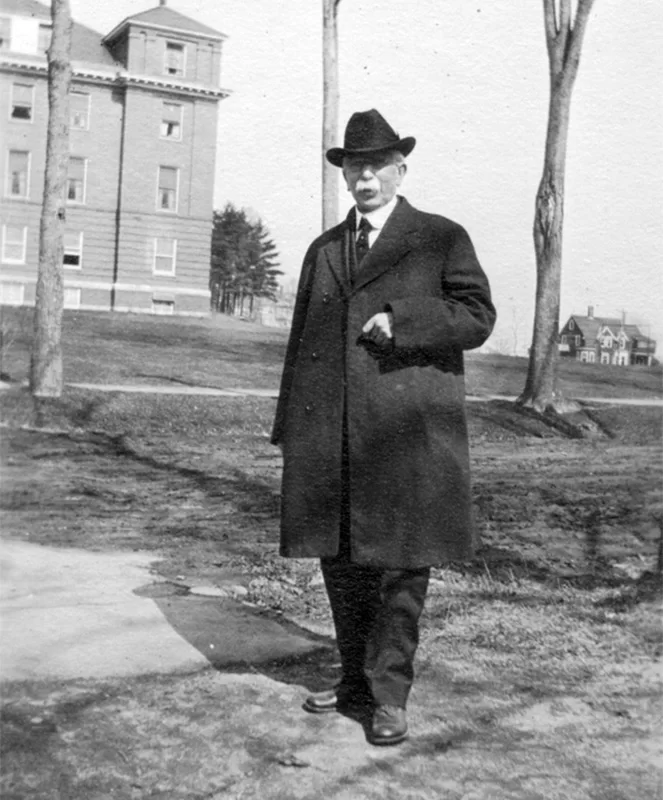
Two days later, Bates President George Colby Chase released a statement saying that the problem was not with the sport, but with college leaders. “We have left too much to the well-meaning but undeveloped judgment of students.” At the time, students had a large hand in running their college sports teams. Within a year, new rules at the national level legalized the forward pass, banned the most dangerous formations, and created what would become the NCAA.
At Bates, the reforms were welcomed by students. “Ringers, hirelings, and physically perfect ignoramuses, we will leave to those who want them. We want clean, intelligent Bates men,” The Bates Student reported.
Oct. 28, 1911: A ‘near-riot,’ and accusations of UMaine ‘muckerism’
Adelbert Jakeman’s football history notes a “near riot” after Bates upset the University of Maine, 5–0, at Orono, in 1911.
After the game, Bates fans, led by the college band, began to parade from the field through the Maine campus. That did not go over well with the locals, who believed that the celebration violated sports etiquette.
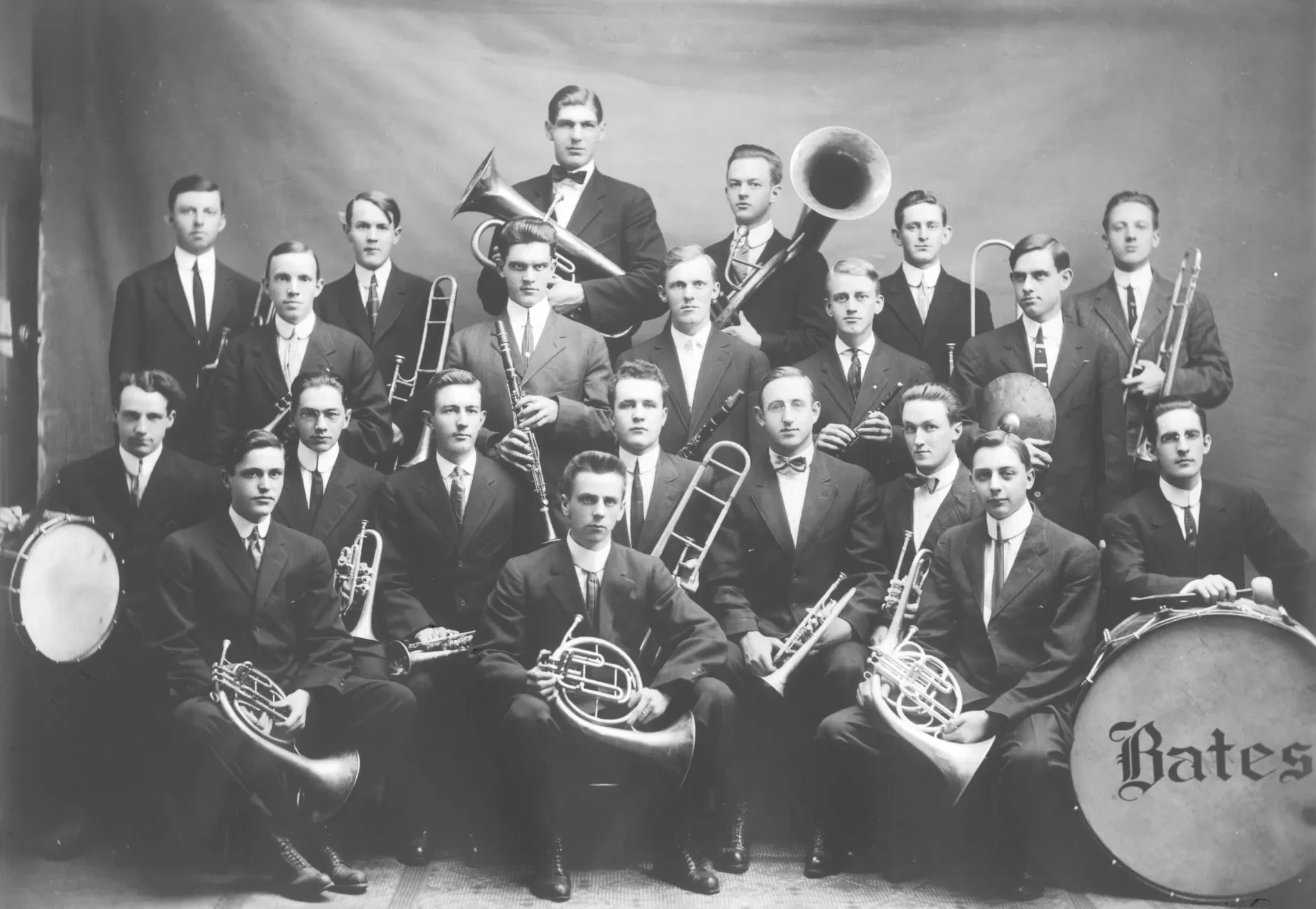
When Maine students “attempted to rush the Bates crowd,” the Bates supporters decamped to a public street to form their march, “but again they were rushed by the Maine fellows.” Chaos ensued. “The Bates line was broken up and considerable damage done to the band instruments in the scrap which followed,” reported the Student.
Later, Bates professor and head football coach Royce Purinton, Class of 1900, told his physiology class that the Maine students were guilty of “muckerism.”
Sept. 26, 1925: The huddle comes to Bates
What the conference on the pitching mound is to baseball, the huddle is to football. It’s iconic, and it came to Bates football in 1925.
The newfangled approach to playcalling was described as “a congregating of the players in a closely locked group behind the scrimmage line. From this circle, the men jump to their positions and the ball is snapped back and the play put into motion without an audible word.”
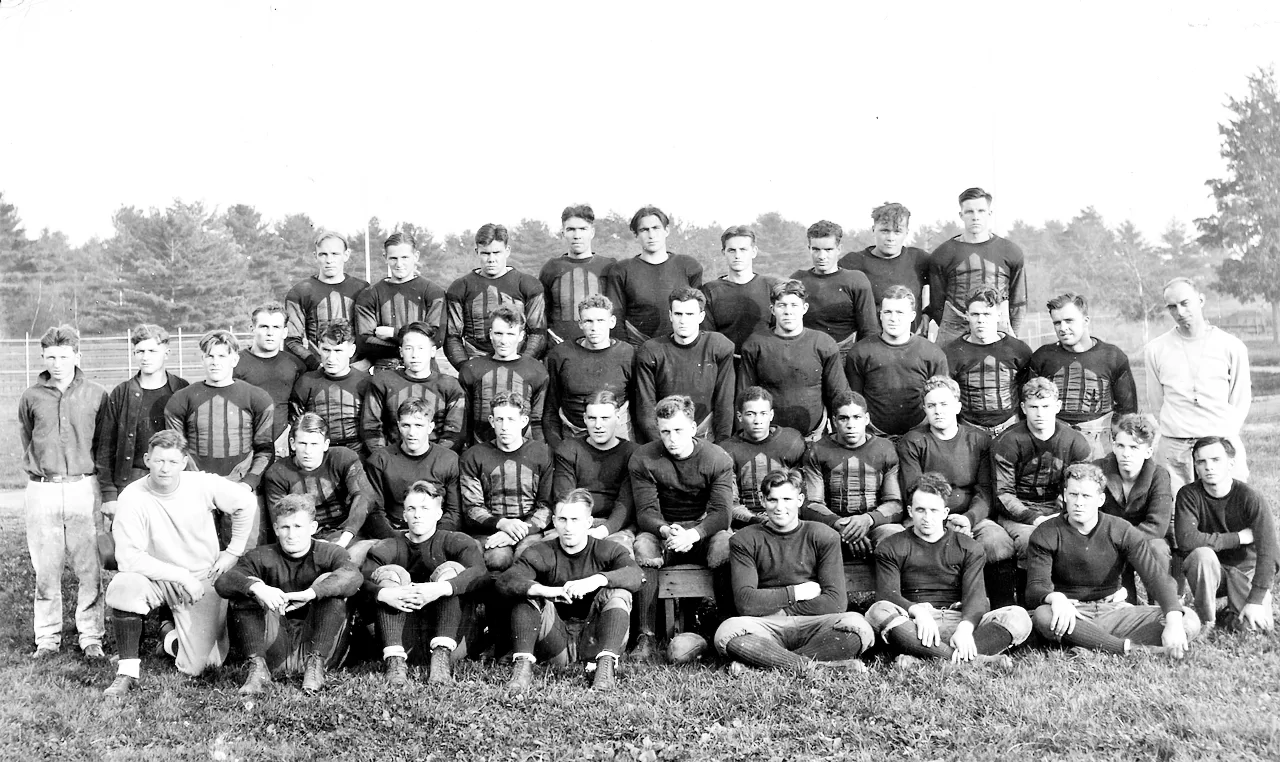
Before the advent of the huddle, quarterbacks would yell out plays at the line of scrimmage. Head coach Oliver Cutts, Class of 1896, told the local paper that it would no longer be necessary for a team’s home cheerleaders to hush the crowd while the quarterback yells out the play.
Oct. 1, 1932: Bates ties mighty Yale
The score was 0–0 but still made national news, including in The New York Times, under the headline “Ability of Bates to Hold Yale to 0–0 Tie Listed Among Saturday’s Surprises.”
“Scarlet-clad gridiron warriors from Bates College, Lewiston, Maine, furnished one of the early football surprises of the season here Saturday in holding Yale to a nothing to nothing tie in the opening game of the season for the Elis,” reported a wire story that appeared in newspapers as far away as Miami, Fla.
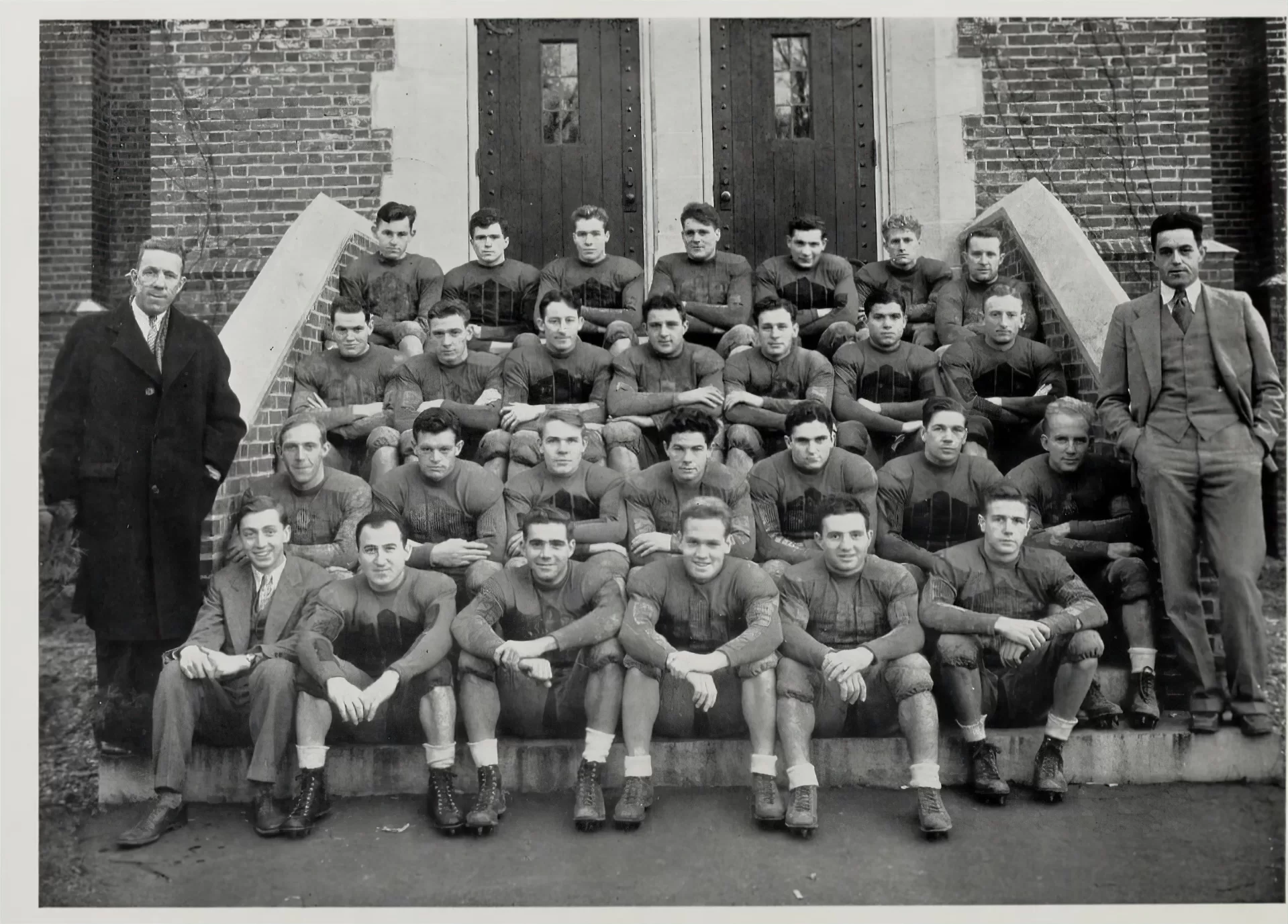
To celebrate, Bates freshmen hauled logs to the top of Mount David, then touched off a bonfire that could be seen for miles around. “Bombs and red fire added to the general conflagration,” the Lewiston Daily Sun said.
Down below, a crowd gathered at Hathorn Hall. Then, led by the campus band, the throng paraded around campus before heading up Mount David for a party and speeches.
Dec. 7, 1946: Bates heads to Ohio for the Glass Bowl
In 1946, Bates returned from a three-year wartime hiatus with just 28 players. “Most of the guys were veterans of the war. We had no doubt we would do well,” recalled guard Linden Blanchard ’49.
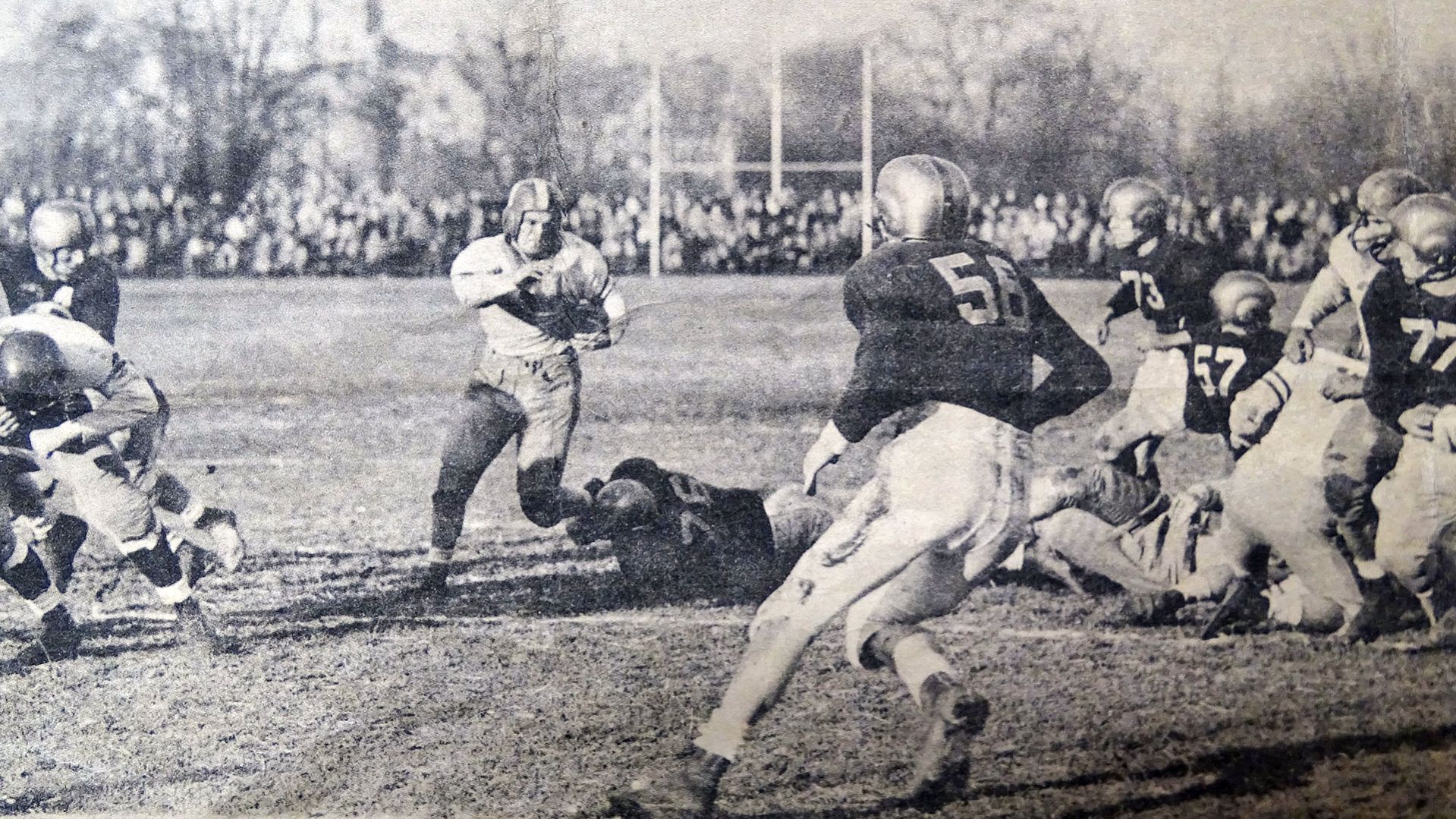
Led by coach Raymond “Ducky” Pond, the Bobcats rolled to a 7–0 season, outscoring opponents 89–10, and earned a postseason football bid to the inaugural Glass Bowl in Toledo.
The Dec. 7 game was full of pageantry — bands, flags, and even an 18-pound lobster presented to Ohio’s governor. Underdog Bates stunned the crowd of 12,000 by scoring first.
Art Blanchard ’50 was named the game’s MVP, and while Bates lost 21–12, the team left Ohio with a unique Bates football milestone: the only bowl game played by a NESCAC team.
This video clip shows cheerleaders delivering the huge lobster to Ohio Gov. Frank Lausche at halftime, a gift from Maine Gov. Horace Hildreth.
Nov. 10, 1956: Bates sweeps the old State Series for the final time
Before the Colby-Bates-Bowdoin rivalry, there was the Maine State Series, with UMaine in the mix. By 1956, Maine had dominated, winning nine straight series games. But in 1956, the Bobcats rattled off five straight wins, including a sweep of the series, to capture their last outright state title before Maine left the league in 1964.
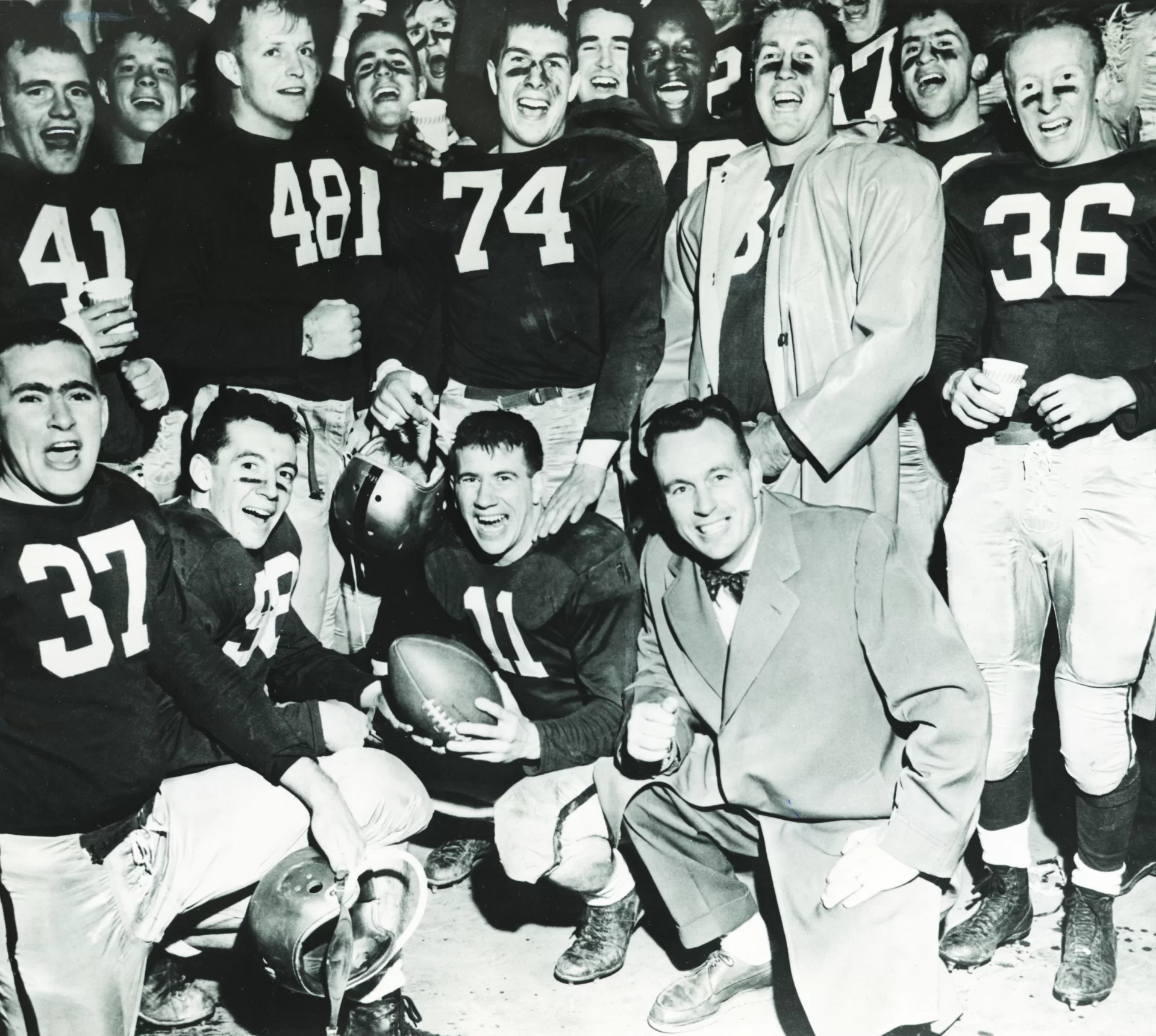
The star was Bob “Spinner” Martin ’57, described by coach Bob Hatch as a player who “did so many things so well.” An All-America selection, Martin led Bates in rushing, passing, receiving, punting, and scoring that year — 99 points in all. Teammate Brian Flynn ’57 recalled the grueling two-way play of the era: “If you went in you had to play both ways until you came out.”
The clincher came with a 38–13 rout of Colby before Maine Gov. Edmund Muskie ’36 and 3,000 fans, capping Bates’ last State Series crown.
Oct. 28, 1961: Bob Hatch schemes his way to a huge surprise vs. UMaine
Using an innovative spread formation vs. Maine on Oct. 28, 1961, head coach Bob Hatch surprised the heavily favored Black Bears, delighted the national media, and inspired the campus.
Dubbed the “Popular Halfback” by the Associated Press, the formation had running back Paul Planchon ’64, with a “pair of sticky fingers for catching passes,” lined up like a typical wide receiver. But he wasn’t out wide alone. With him went four linemen. When quarterback Swift Hathaway ’62 took the snap, he could either hand off to a running back behind him or — which he did most often versus Maine — toss a pass to Planchon, who headed downfield with his escort.
The creative play confused Maine, helping Bates to a surprise 15–15 tie. (The name “Popular Halfback” was a reference to the Army’s “Lonesome End,” Bill Carpenter, who always lined up near a far sideline and never even came into the huddle.)
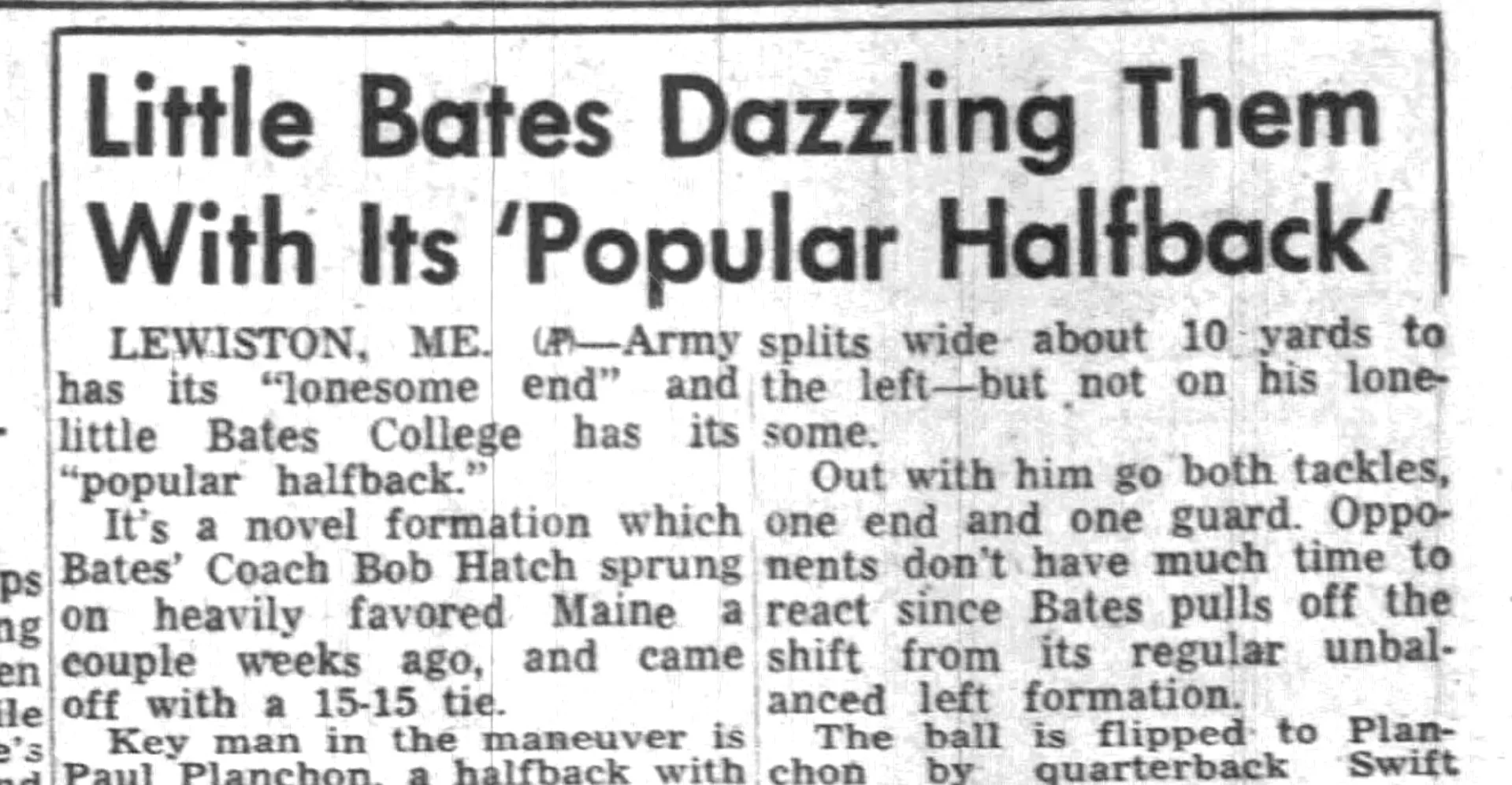
Web Harrison ’63, one of Hatch’s players who would go on to coach Bates football from 1978 to 1991, recalled the post-game scene:
“In the most genuine display of school spirit I ever witnessed, students lined both sides of the walk from Alumni Gym to the Den, waited for the players to emerge from the locker room, and cheered each player as we walked to the Den.”
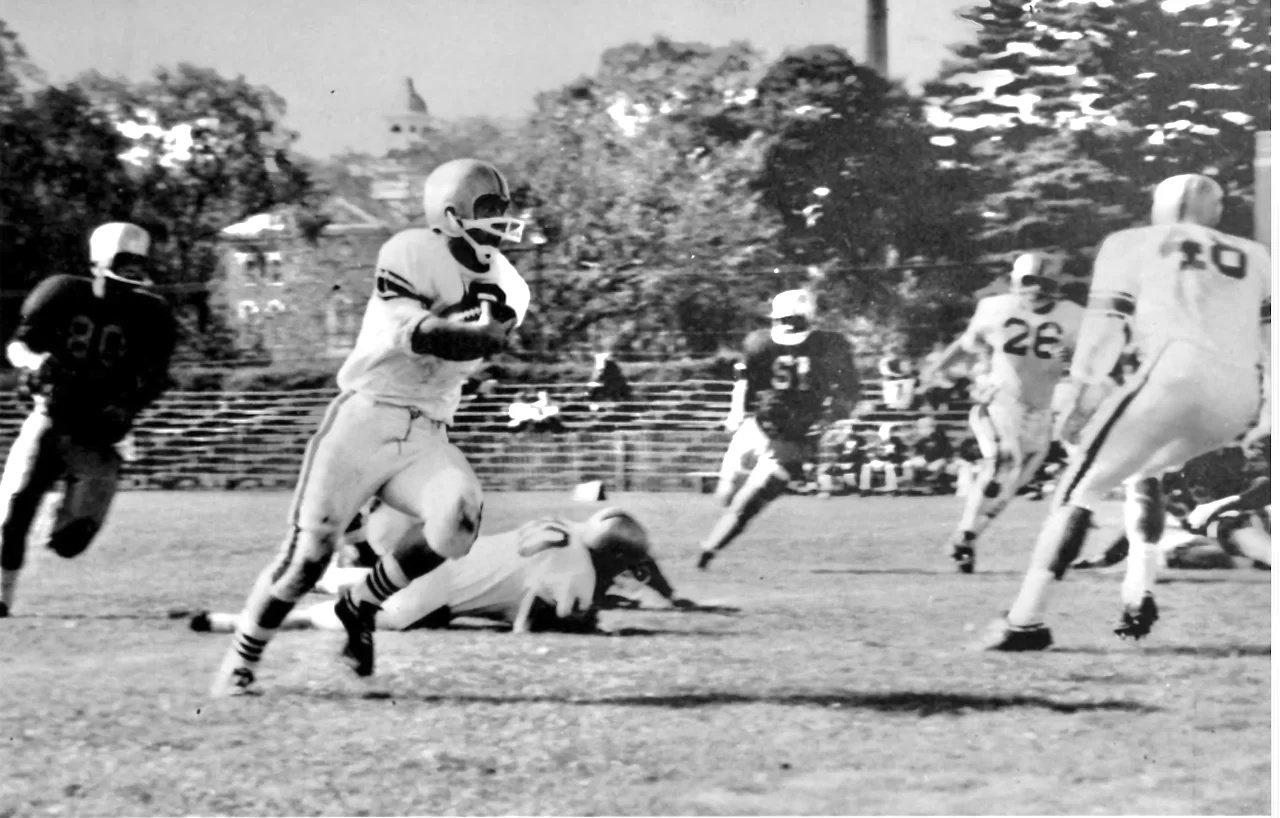
1974: A beloved coach coins ‘Great Day to Be a Bobcat’
When Web Harrison ’63 joined the Bates football coaching staff in 1974, he would kid around with his friend and fellow alumnus Russ Reilly ’66, who was a trainer and assistant coach.
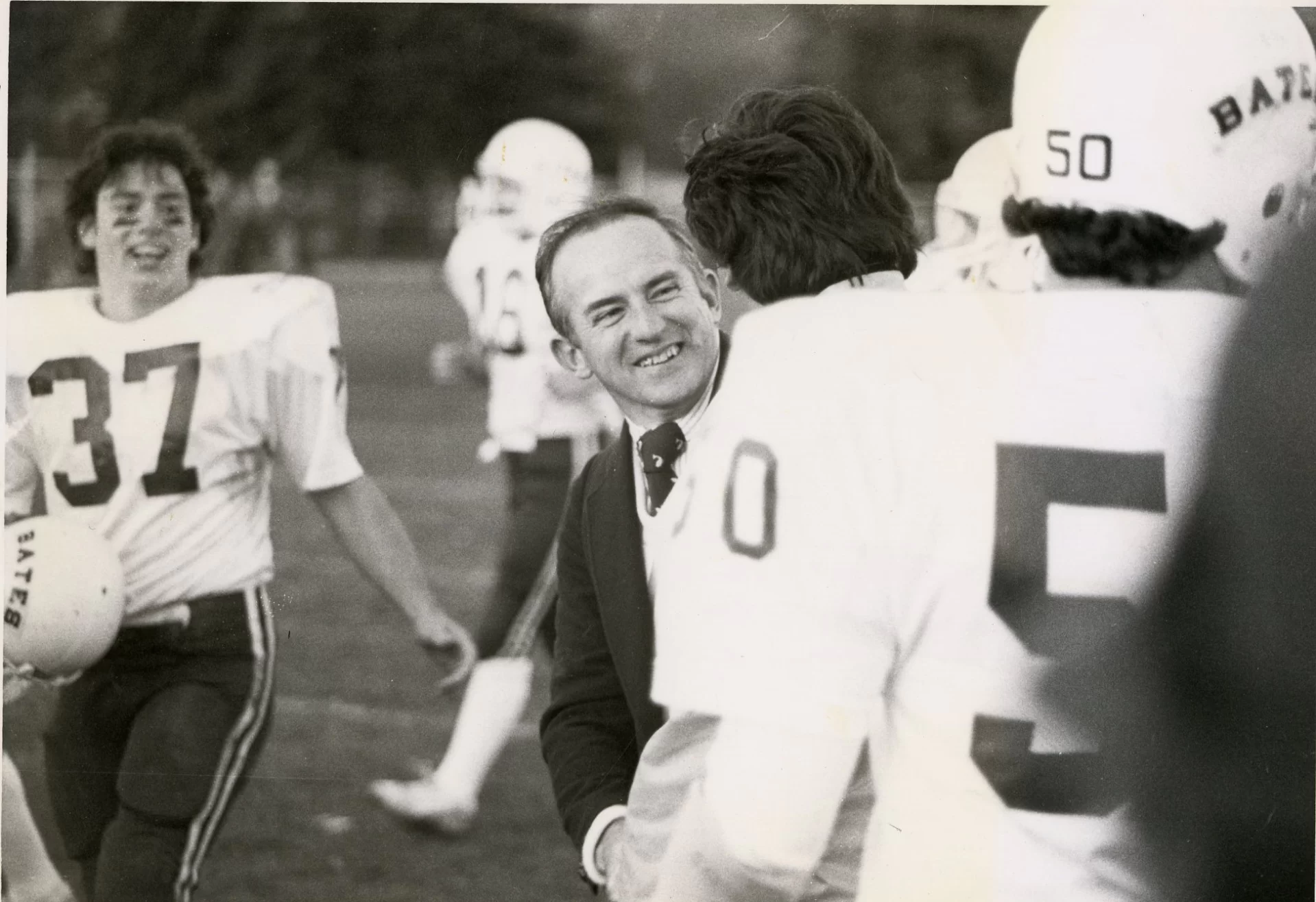
Harrison, who had seen combat duty in Vietnam with the Marines, would greet Reilly with a version of a Marine Corps saying: “Good afternoon, Russ! What a grand and glorious day to be a Bates student, where every day is a holiday and every meal is a banquet.”
That greeting was soon shortened to today’s “It’s a Great Day to Be a Bobcat!” In this video, Harrison shares the story:
Nov. 7, 1981: On and off the field, Bates overwhelms its oldest rival
With All-American receiver Larry DiGiammarino ’82 at his best on the field, and fired-up Bates students making headlines off the field, the 23–13 victory over Bowdoin was the high point of one of Bates’ best seasons ever.
Bates swaggered into Bowdoin with a 5–1 record under head coach Web Harrison ’63, who was in the fourth year of a 20–12 stretch and two outright CBB titles.
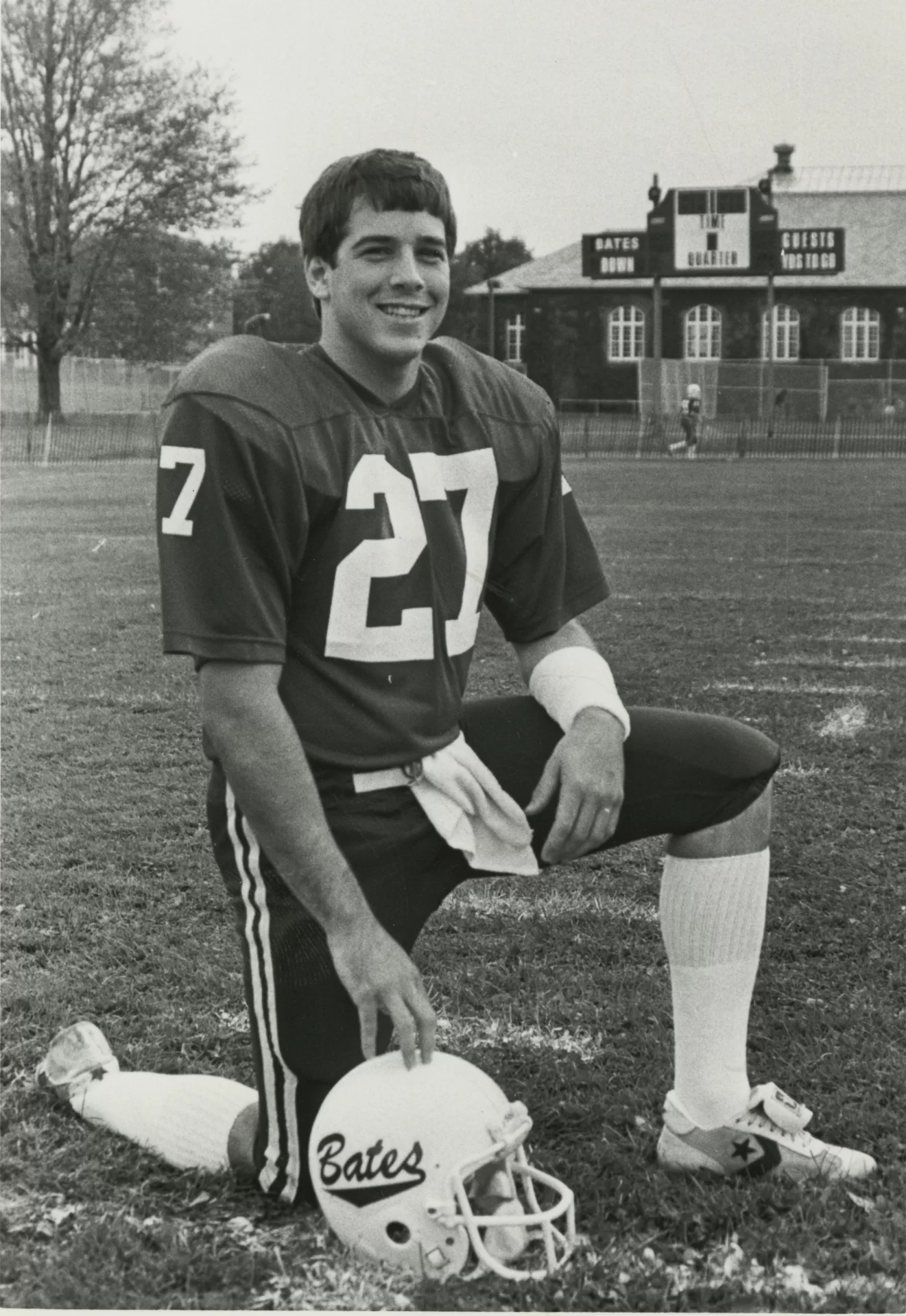
Before the game, when tailgating Bates students resisted extinguishing their barbecue grill, the Brunswick fire department was called in to “hose down the hibachi,” according to The Bates Student.
Then, a Bowdoin security officer was pushed aside as students rushed through the Whittier Field gate without paying. A Bates student was arrested, but released in time to receive an ovation from the Bates student section.
The Bates Student called the sequence of events in Brunswick “overreaction” and called for the end of paid admission. After conferring with his Bowdoin counterparts, Dean of the College James Carignan ’61 told the Student that “they feel the whole thing is very unfortunate. They are most anxious that these kinds of incidents not interfere with our relationship as a whole.”
Feb. 19, 1998: Bates appoints Mark Harriman as head coach
With his appointment as head coach in 1998, Mark Harriman took over a team that had won two games and lost 46 over the previous six years.
When he retired in 2018 with a record of 46–115, Sun Journal columnist Kalle Oakes praised the Bates coach under the headline, “Harriman was the hero Bates needed.” What his record didn’t explain, said Oakes, was how Harriman created stability and restored pride in Bates football.

A few years earlier, Oakes had done something few columnists dare — apologize in print — in this case for snarky comments about Bates’ football fortunes.
In praising Bates football and Bates athletics, Oakes wrote, “I’ve never met a coach or athlete affiliated with Bates whom I didn’t like. They’re shake-your-hand-firmly, look-you-in-the-eyes, give-you-a-thoughtful-answer folks. They have sports and life in perspective. Lord knows we need more of those qualities in this world.”
Oct. 28, 2006: Bates football lands in Sports Illustrated in a big, muddy way
On Oct. 28, 2006, Garcelon Field turned into a waterlogged stage as 4.62 inches of rain poured down during the Bates–Colby game. Photographer Daryn Slover, on assignment for Bates, battled the elements until his lenses gave out — but not before capturing an unforgettable shot: Jamie Walker ’07, of Needham, Mass., dragging a pile of Colby defenders on one of his 43 carries.
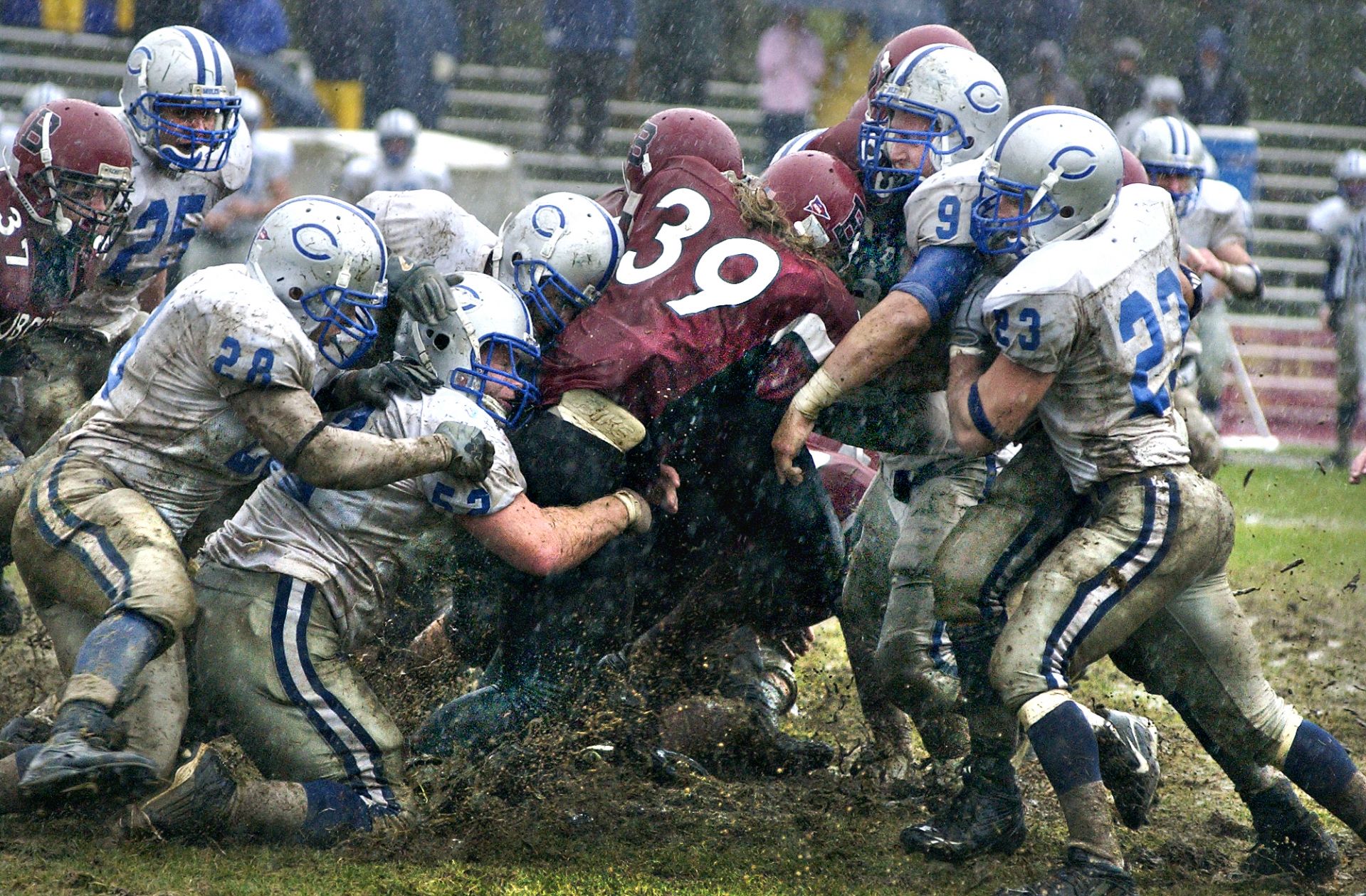
The image, sent to Sports Illustrated the next Monday, landed a two-page spread in the magazine’s Football America issue. After four overtimes, Colby’s 22-yard field goal sealed the Mules’ 10–7 win.
Another national spotlight moment in the decade came in 2002, when Sean Atkins ’03 of New York City ran for seven touchdowns and 302 yards in a 48–28 win over Bowdoin. A clip of the performance aired on ESPN. “That’s when it sunk in,” Atkins said of seeing himself on TV. But any glory, he said, “belongs to Bates College and the people who gave me my opportunities.”
Oct. 9, 2010: Bates dedicates major renovations to Garcelon Field
In 2010, a $2.6 million, donor-funded makeover turned 1899’s Garcelon Field into a truly 21st-century campus landmark. “It’s awesome,” Brendan Murphy ’11 of Sandwich, Mass., a lineman and senior tri-captain, told the Sun Journal.
“And it was all donor-funded. It’s a good feeling that people stepped up to show what Bates athletics means to them, specifically football.”
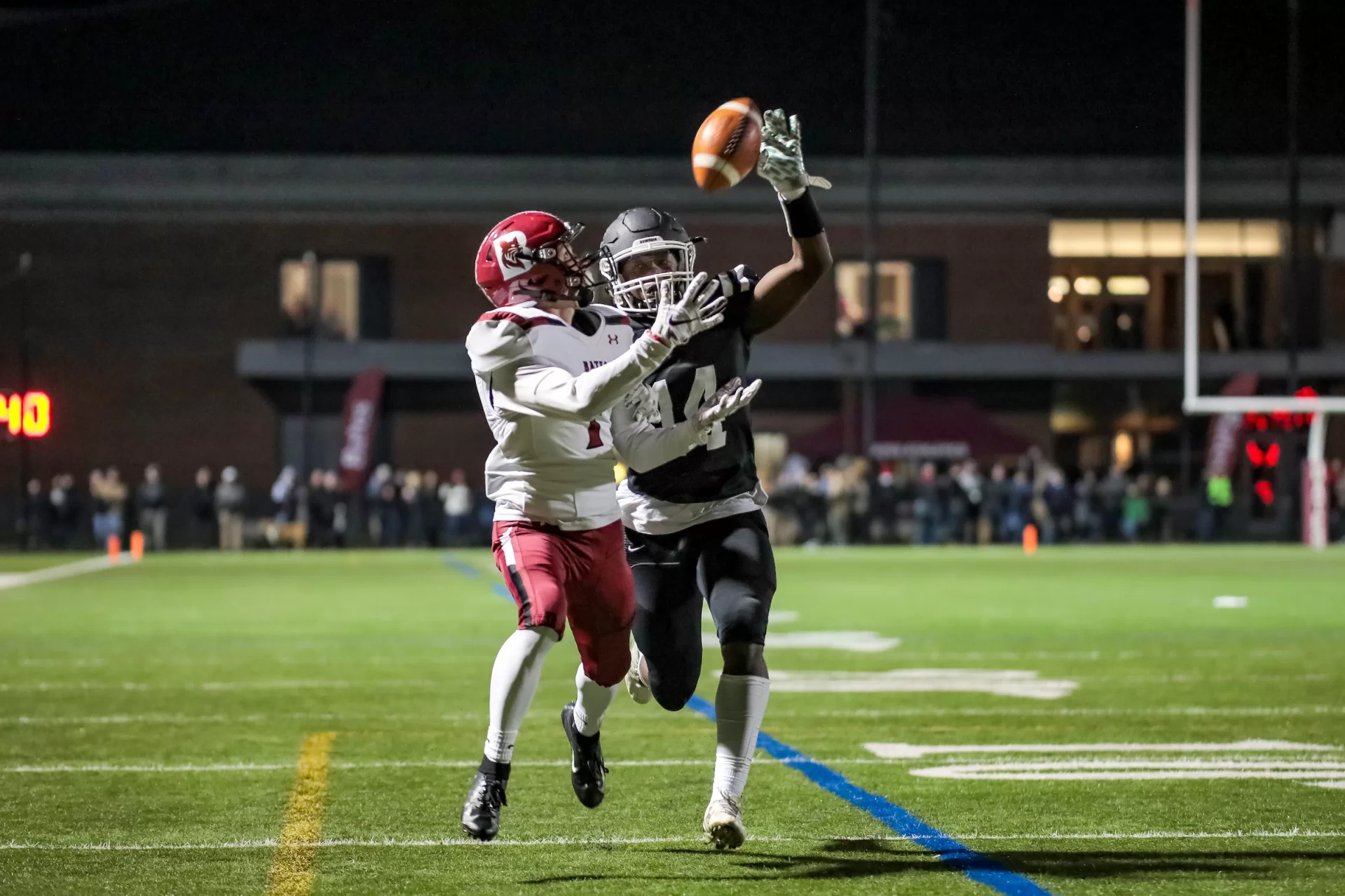
The renovation installed a new FieldTurf surface; an aluminum grandstand for 1,500 (with stadium seats at midfield); an expanded press box; and four Musco light towers that finally brought true night games to Bates.
The upgrade did more than freshen football’s home. It also opened the door to all-year, day-and-night play on the field. With men’s lacrosse moving to Garcelon, the venue hosted its first-ever playoff game, an NCAA first-rounder, and soon became a year-round stage for big moments, practices, and pick-up traditions alike.
Sept. 28, 2024: A historic road victory vs. head coach Matt Coyne’s alma mater
In-state football rivalries have taken center stage ever since Bates began playing football in the 1800s. But in recent years, a rivalry with a NESCAC foe 350 miles away has gained traction.
On Sept. 28 of last year, Bates defeated previously unbeaten Wesleyan — the alma mater of head coach Matt Coyne, who was appointed Bates head coach in 2022. The road win was Bates’ first against the Cardinals since 1981.
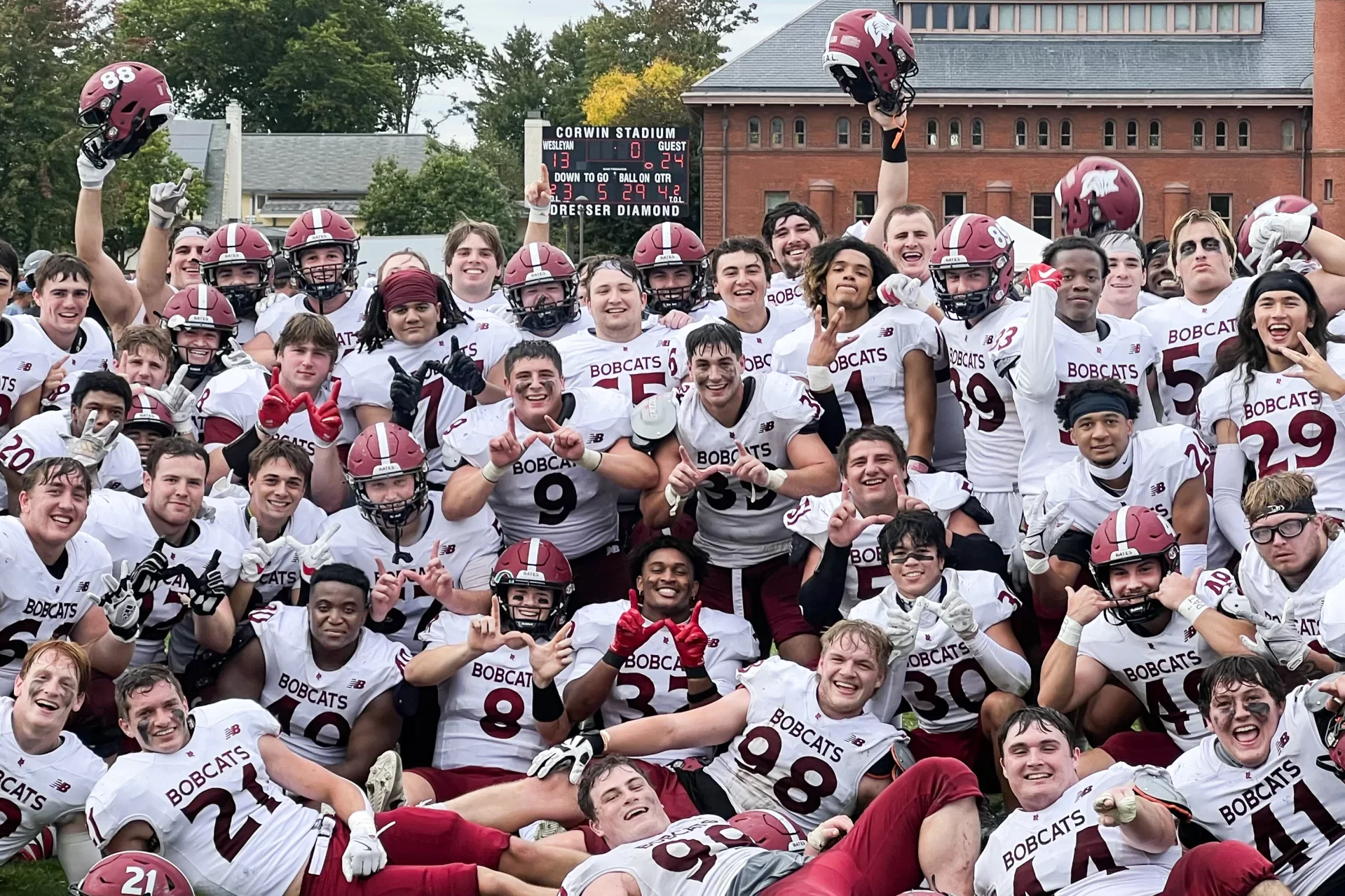
Like the crowds of yesteryear that boarded trains from Lewiston to places like Brunswick, New Haven, or even Toledo, Ohio, Bates believers turned out in force to support the Bobcats in Middletown.
“We had a huge number of traveling fans down there,” Coyne recalled. “The environment was unbelievable. We’re sitting there, and it’s louder on our side than on Wesleyan’s.
“All the parents, the alums, everybody I’ve heard from over the last 24 or 36 hours, hundreds of texts. It’s really awesome and it’s a testament to these kids’ work ethic and what they’ve put into this program.”
